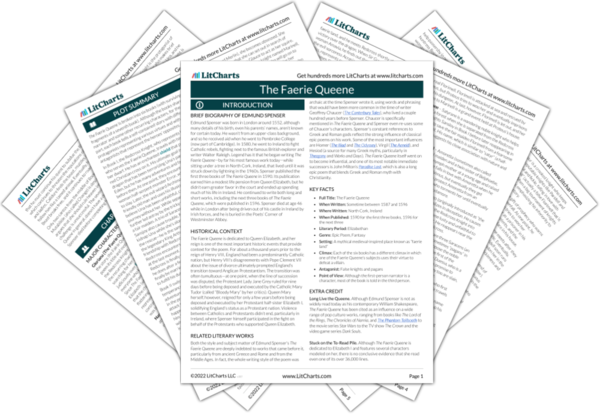Although medieval Europe is most associated with Christianity, Spain was an Islamic country during much of the Middle Ages, and the Crusades brought many Christian European soldiers to the Middle East. Muslims had mostly been driven out of Spain by Spenser’s time, but they were stock villains in medieval romances that would have inspired
The Faerie Queene.
